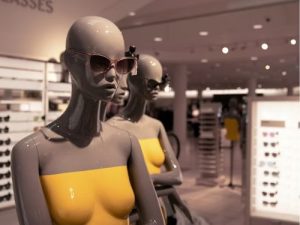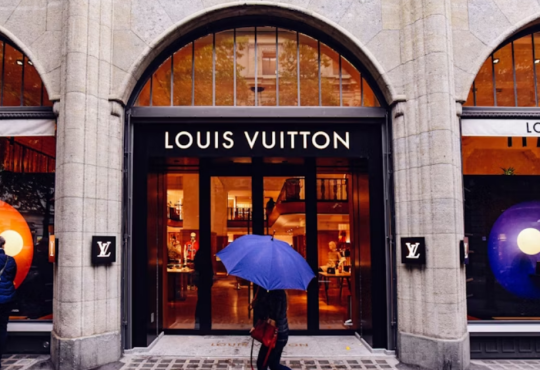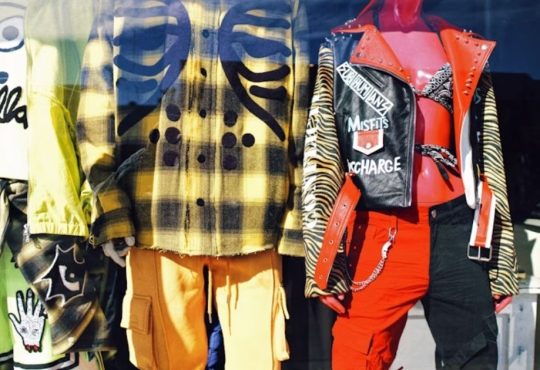The fashion industry is stepping into a bold new frontier: the metaverse. As digital environments become increasingly immersive, virtual wardrobes are redefining the intersection of style, shopping, and self-expression. Avatars, AR-enabled social platforms, and interactive digital spaces are transforming the concept of a closet, enabling fashion to transcend physical limitations.
Curating a digital wardrobe changes the way consumers engage with fashion, bridging online experiences and real-world style. Styling in the metaverse offers opportunities for creativity, experimentation, and social interaction, challenging traditional notions of clothing and identity while reshaping the broader fashion landscape.
What Is a Virtual Wardrobe?

A virtual wardrobe is a curated collection of digital clothing and accessories designed for avatars or interactive experiences in augmented and virtual reality environments. Unlike traditional closets, these wardrobes exist entirely in digital form, enabling endless mix-and-match possibilities without the limitations of size, storage, or physical wear and tear. Fashion brands, game developers, and social media platforms are increasingly offering virtual garments—from haute couture sneakers and designer jackets to one-of-a-kind accessories—all purchasable as NFTs (non-fungible tokens) or other digital assets that verify authenticity and ownership.
Virtual wardrobes extend beyond gaming, becoming mainstream tools for digital self-expression and social engagement. Users can showcase personalized looks in virtual spaces, participate in immersive fashion shows, or experiment with styling before committing to physical purchases. This evolution allows fashion enthusiasts and influencers alike to explore bold, imaginative designs, connect with global communities, and engage with clothing in ways that combine creativity, technology, and sustainability.
Benefits of Styling in the Metaverse
Unlimited Creativity
Digital fashion offers a realm of possibilities unconstrained by the physical limitations of traditional garments. Users can experiment with bold, unconventional colors, intricate patterns, and textures that would be difficult—or impossible—to achieve in real life. Designs can include gravity-defying silhouettes, fluid materials that change shape or movement dynamically, and other imaginative effects that push the boundaries of conventional fashion. This freedom enables truly personalized and experimental styling, transforming the digital wardrobe into a canvas for creativity and self-expression that transcends the limitations of physical production.
Sustainability
Virtual wardrobes provide a more eco-conscious alternative to traditional fashion by allowing for style exploration without the need for physical garment production. This digital approach reduces textile waste, limits the environmental footprint associated with manufacturing and shipping, and helps decrease carbon emissions tied to fast fashion. By allowing multiple users to experience the same digital piece without creating additional inventory, virtual wardrobes support a circular, low-impact model of fashion consumption. Combined with thoughtful design and energy-efficient technologies, this approach presents a pathway for sustainable style that aligns creativity with environmental responsibility.
Personalization and Interactivity
Advanced AR and VR technologies are transforming digital fashion into an interactive and highly personalized experience. Avatars can try on virtual garments in real time, adjusting sizes, proportions, and fit to mirror realistic body movements. Beyond simple sizing, patterns, textures, and colors can be swapped instantly, allowing users to experiment with countless combinations without limitation. Some platforms even simulate dynamic elements such as fabric drape, movement, and lighting effects, providing an immersive styling environment that responds to user input. This level of interactivity elevates digital fashion from passive browsing to an engaging, creative process, where each virtual wardrobe can be tailored precisely to individual taste and aesthetic preferences.
Social Engagement
Virtual wardrobes extend fashion into the social and collaborative space, enabling users to showcase outfits within digital communities and connect with like-minded individuals worldwide. Platforms can host virtual fashion events, runway shows, or styling competitions, providing opportunities to share creativity and receive feedback in real-time. Collaborative features enable multiple users to experiment together, remixing designs, combining digital garments, or creating mashups that merge distinct styles into innovative ensembles. By integrating social interaction with digital fashion, these platforms transform individual style exploration into a shared, community-driven experience, where technology, creativity, and social connection intersect seamlessly.
Challenges to Consider
Despite its transformative potential, virtual wardrobe styling faces several significant hurdles. Accessibility remains a primary concern, as immersive experiences often require specialized hardware or software that may not be widely available or affordable. This can create a barrier for many users, limiting adoption and inclusivity within the technology.
Digital garments, while promoting eco-conscious practices by reducing physical production, can come with high upfront costs or dependence on blockchain systems, which introduce their own environmental and ethical considerations. Energy-intensive blockchain processes and the carbon footprint associated with creating and maintaining digital assets remain topics of debate. Privacy and data security are additional critical factors, as avatars and virtual wardrobes can contain sensitive personal or financial information. Ensuring that these digital identities and assets are protected is crucial to building trust and promoting the broader adoption of virtual styling platforms.
Challenges to Consider
Despite its transformative potential, virtual wardrobe styling faces several significant hurdles. Accessibility remains a primary concern, as immersive experiences often require specialized hardware or software that may not be widely available or affordable. This can create a barrier for many users, limiting adoption and inclusivity within the technology.
Digital garments, while promoting eco-conscious practices by reducing physical production, can come with high upfront costs or dependence on blockchain systems, which introduce their own environmental and ethical considerations. Energy-intensive blockchain processes and the carbon footprint associated with creating and maintaining digital assets remain topics of debate. Privacy and data security are additional critical factors, as avatars and virtual wardrobes can contain sensitive personal or financial information. Ensuring that these digital identities and assets are protected is crucial to building trust and promoting the broader adoption of virtual styling platforms.
Fashion Brands Embracing the Metaverse

A growing number of leading fashion brands are investing heavily in virtual wardrobes and digital fashion experiences, recognizing the metaverse as a new frontier for style and consumer engagement. Luxury houses such as Balenciaga, Gucci, and Dolce & Gabbana are creating blockchain-based and NFT-enabled collections, enabling avatars to wear high-end pieces in games, on social platforms, and at virtual events. These initiatives not only extend brand visibility into digital spaces but also provide innovative revenue streams and opportunities for creative experimentation that go beyond the constraints of physical production.
Balenciaga and Gucci Digital Collections
Luxury fashion houses like Balenciaga and Gucci are pioneering digital-only collections that bring high-end style into virtual spaces. These collections allow avatars to wear designer pieces within video games, social platforms, and augmented reality environments, merging fashion with interactive digital experiences. From limited-edition sneakers and handbags to intricate couture-inspired outfits, the digital garments replicate the aesthetic and prestige of physical pieces while existing entirely in a virtual format.
These initiatives blur the lines between traditional fashion and gaming or social media culture, enabling users to showcase luxury style in immersive settings without producing physical garments. Beyond style, digital collections open new revenue streams for brands, reduce the environmental impact of manufacturing, and provide an experimental playground for creativity, allowing designers to explore bold shapes, colors, and textures that may be impractical in the real world.
Nike Cryptokicks
Nike has entered the digital fashion arena with its NFT-based “Cryptokicks,” offering a new way to engage with sneakers beyond the physical realm. Avatars, styled in virtual environments, can wear these digital sneakers and even be traded on blockchain platforms, blending gaming, fashion, and collectible culture. Cryptokicks replicate the brand’s iconic design aesthetics while providing features impossible in real life—such as animated effects, color-changing materials, and customizable patterns—allowing users to express creativity and individuality in the digital space.
The initiative also introduces a new model of ownership, as each pair of Cryptokicks exists as a verifiable NFT, granting authenticity and provenance to digital items. Beyond personal style, these digital sneakers offer opportunities for social interaction, limited-edition drops, and resale, while minimizing environmental impact compared to physical production. Nike’s Cryptokicks exemplify how major brands are experimenting with digital fashion, merging innovation, sustainability, and the growing appeal of virtual identity.
Dolce & Gabbana’s Blockchain-Based Collections
Dolce & Gabbana has made waves in the fashion world with collections that exist entirely in digital form, leveraging blockchain technology to authenticate and trade virtual garments. These digital-only pieces—from couture gowns to luxury accessories—can be owned as NFTs, providing verified proof of authenticity and exclusivity. The collections enable users to style avatars, showcase outfits in virtual spaces, and engage in immersive digital fashion experiences that seamlessly blend luxury with cutting-edge technology.
By creating blockchain-based digital fashion, Dolce & Gabbana bridges the traditional world of haute couture with the emerging metaverse. These initiatives expand the possibilities for design, enabling experimental silhouettes, intricate textures, and bold color palettes that might be impossible to replicate physically. At the same time, digital collections offer environmental benefits by reducing physical production and waste, while opening new revenue streams and interactive opportunities for both the brand and its consumers.
These initiatives suggest that the distinction between physical and digital fashion is becoming increasingly blurred. Virtual wardrobes are becoming a complement—not a replacement—to traditional shopping, enabling both experimentation and innovation.
The Future of Virtual Wardrobes
By 2025 and beyond, virtual wardrobes are poised to integrate more seamlessly with real-world fashion, creating hybrid experiences that merge digital and physical styling. Augmented reality mirrors may enable digital outfits to be “tried on” in real-time, while previews of virtual designs can inform custom commissions for physical garments. Some platforms may even allow the rental of digital clothing specifically for social media content, providing new avenues for creative expression without contributing to physical production or waste.
AI-driven styling assistants are expected to play an increasingly central role, offering outfit recommendations tailored to individual taste, current trends, and precise body metrics—both digital and real-world. The metaverse also opens new possibilities for sustainability-focused fashion, reducing the environmental impact associated with manufacturing, shipping, and disposal. By extending style experimentation into virtual spaces, digital wardrobes can provide a creative, interactive, and eco-conscious approach to fashion, bridging innovation with responsibility and redefining what it means to “try on” clothing in the modern era.
Virtual Wardrobes: Shaping the Future of Fashion
Virtual wardrobes are transforming the way fashion is experienced in the digital age. They offer limitless opportunities for creativity, enable sustainable alternatives to physical clothing, and create new avenues for self-expression unconstrained by traditional limitations. From experimenting with bold designs to mixing and matching garments in entirely virtual spaces, these digital closets expand the boundaries of style and personalization.
Despite challenges such as accessibility, data security, and platform limitations, the potential of virtual wardrobes is immense. By 2025, they will have evolved from novelty concepts into a forward-looking vision of fashion, where technology, sustainability, and design intersect. Digital closets offer a glimpse of a future where style can be immersive, interactive, and environmentally conscious, reshaping the way consumers engage with fashion.





